Northwest Michigan vineyard update – Aug. 15, 2019
Pathogens are here and veraison is coming, so sample petioles for a sneak peek at vine nutrient status.

Vine growth, cluster development
In Leelanau and Old Mission AVAs (American Viticulture Areas), the current stage of cluster development for tight clustered cultivars like Vitis vinifera 'Riesling' is at bunch closure (Photo 1), and berry touch for loose clustered cultivars like V. vinifera 'Merlot' (Photo 2). At a warm, premium site on Old Mission Peninsula, “initial” veraison (coloring) has recently been observed in Pinot Noir (Photo 3).
In fact, we have observed tight V. vinifera 'Pinot noir' clusters swell so much that sections of the rachis are pulled off the berry, causing berry desiccation while still positioned in the cluster (Photo 4). Shoot length ranges from 5-8 feet and most vineyards have likely been hedged (Photo 5).
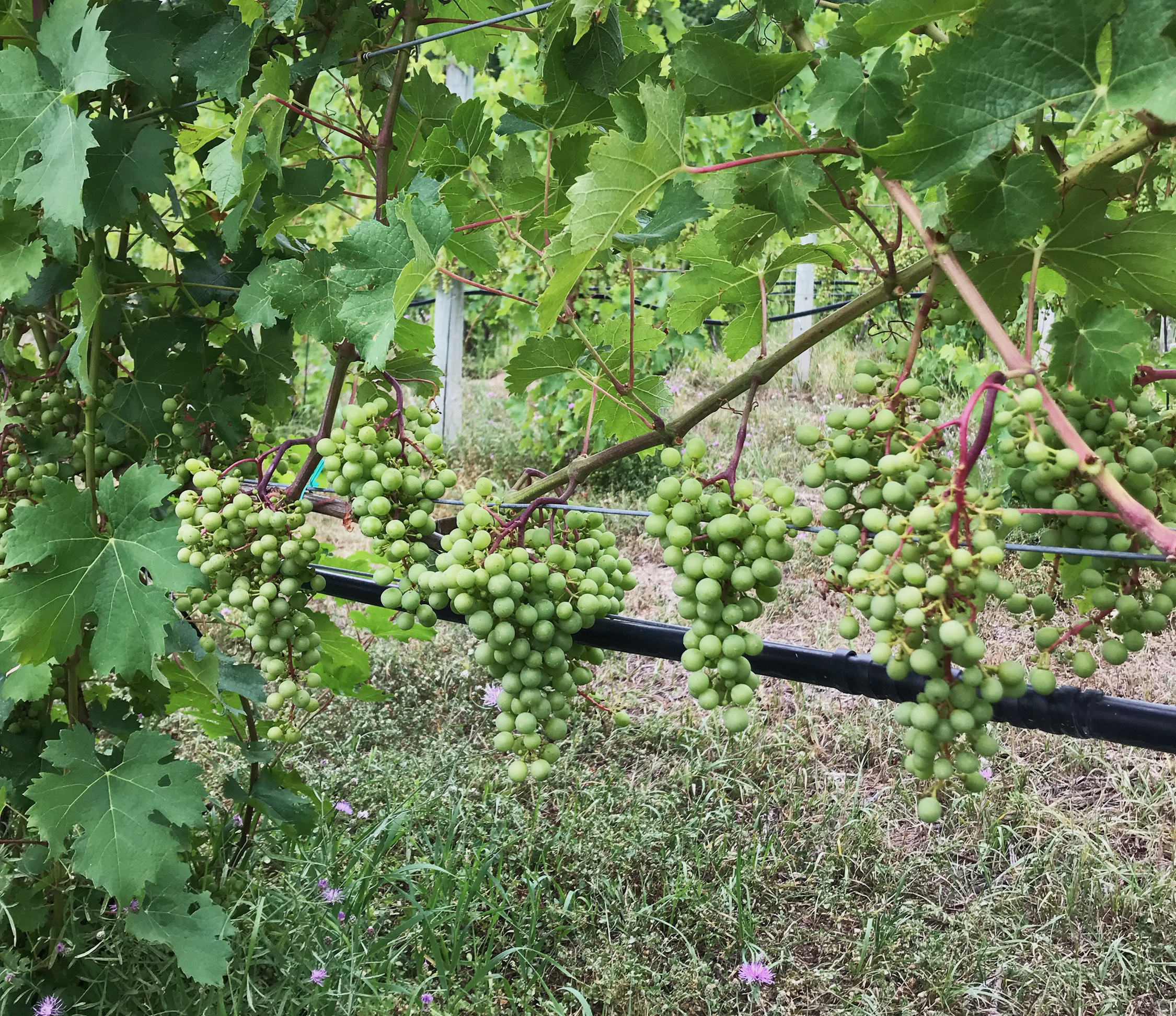
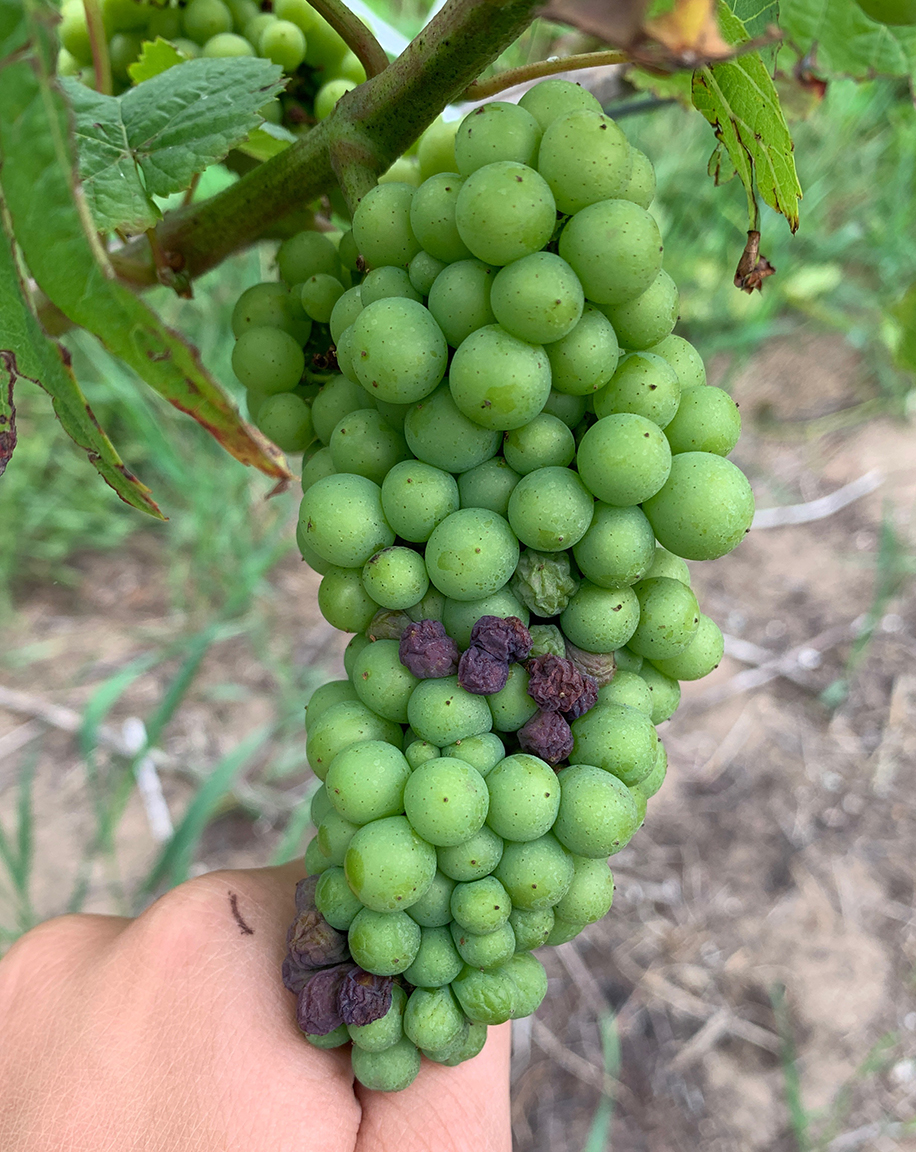
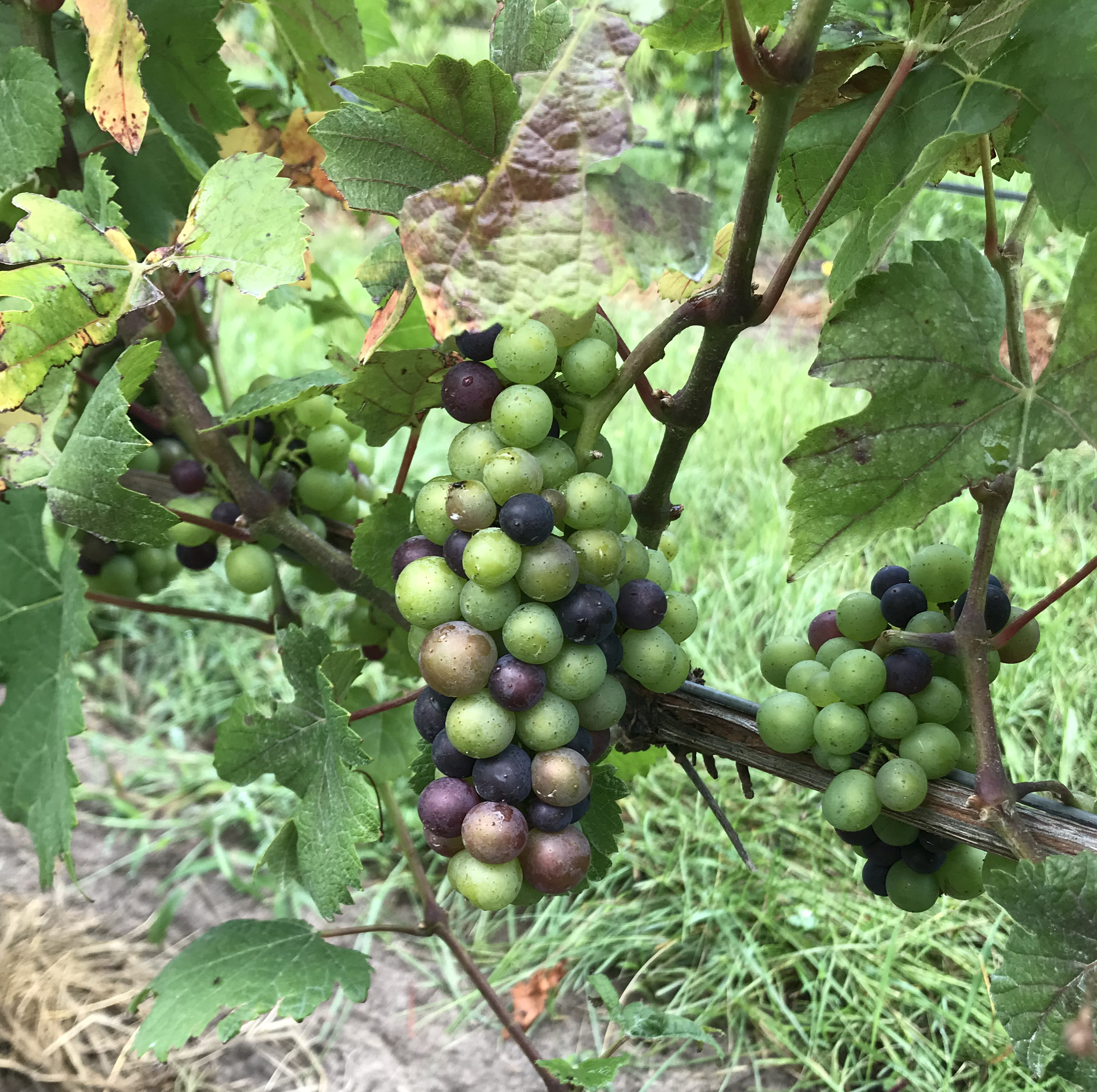
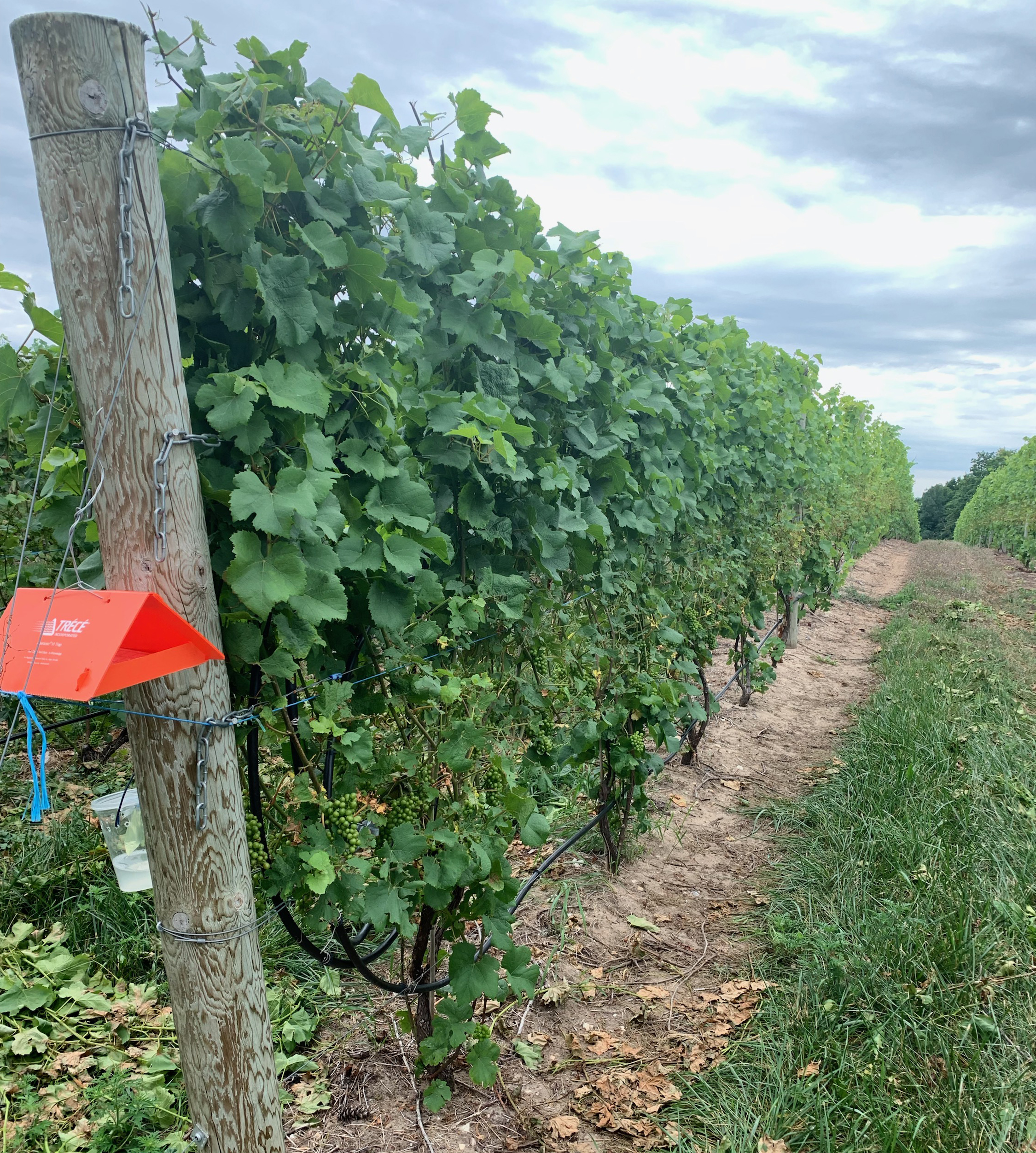
Veraison petiole sampling
Veraison is expected to come within the next 10-14 days depending upon the site and cultivar, so now is a good time to prepare to sample petioles to determine vine nutrient status. As the clusters express approximately 50% colored berries (50% veraison), collect a representative sample of petioles (100 petioles per cultivar) from the youngest fully mature leaf near the shoot apex, typically this is between the fifth and eighth leaf from the shoot tip (Photos 6-8).
Place petioles in a small, labeled paper bag and immediately send to a laboratory, such as the Michigan State University Soil and Plant Nutrient Laboratory. Cornell University has a short YouTube video on how to collect petiole samples from vineyards and prepare them for the testing lab.
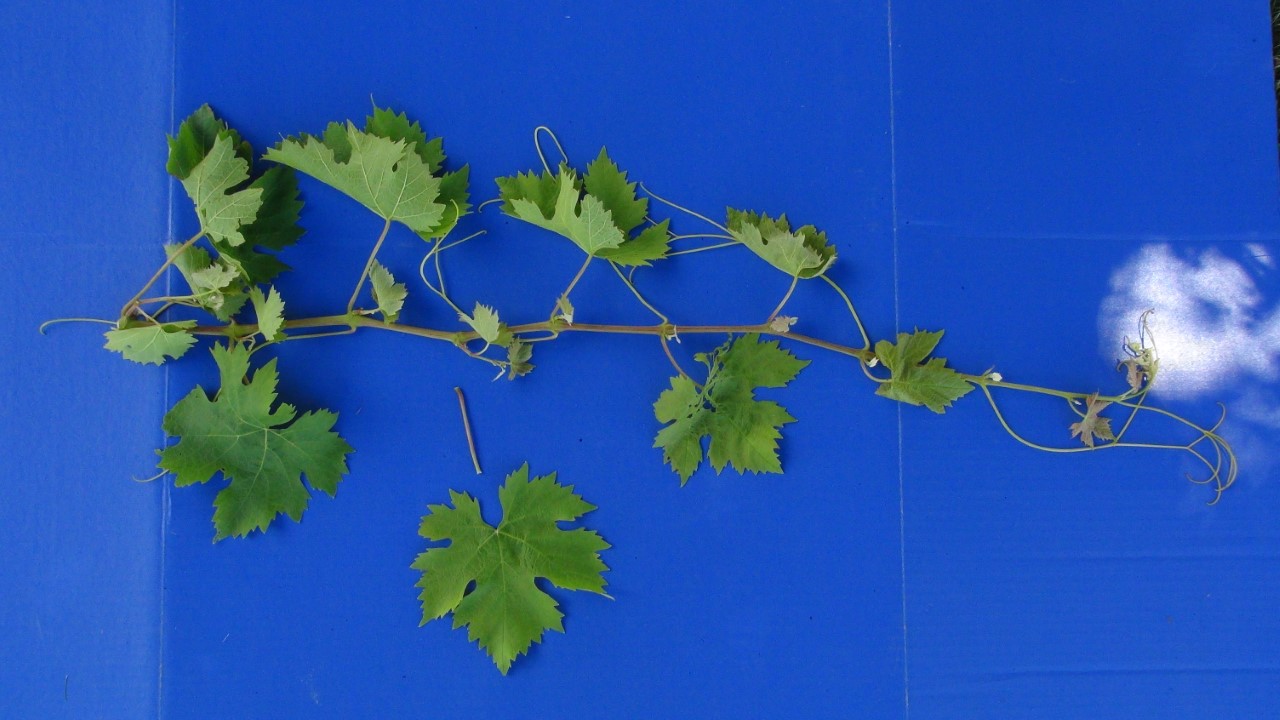
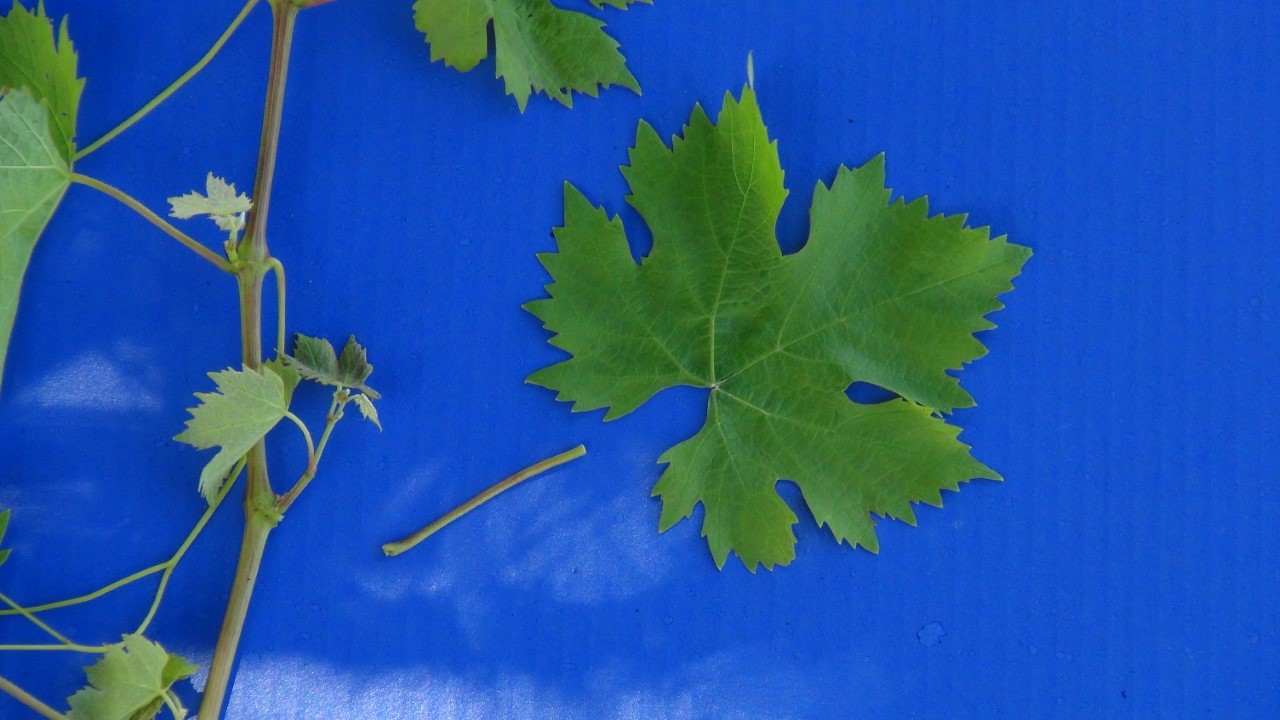
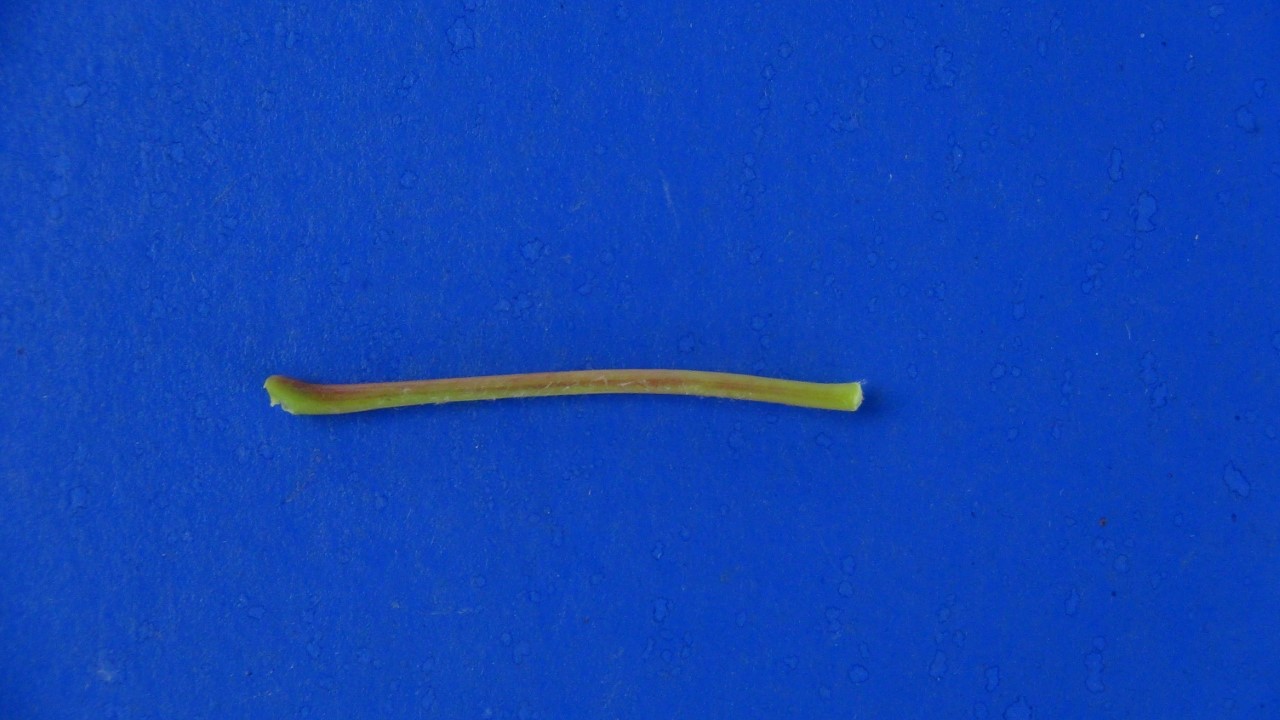
Pathogens and insects
There has been an uptick of observed powdery (Photo 9) and downy mildew (Photos 10-11) infected leaves. Although it has been dry, this increase in powdery and downy mildew pressure is an effect from the rain events that occurred two to three weeks ago combined with recent cooler nights that led to dense canopies, which increased micro-climate humidity and difficulty achieving full spray coverage. The clusters are 10-14 days delayed in development, so pressure from insects seeking sugar directly from the grapes, like yellow jacket, is still relatively low, but that will increase in late August to early September, which is the estimated time of about 50% veraison, so now would be a good time to set out traps in areas with a history of high pressure.
There have been reports of aphids, which are significant vectors for vineyard viruses (Photos 12-13) gathering and feeding on the shoot tips. Typically, natural predators control aphid populations, so control strategies should only be implemented in rare and severe cases that cause a significant biological and economic threat.
Stink bug (Photo 14) and Japanese beetle are causing concern in localized areas.
For a more in depth, statewide report on vineyard pests and control recommendations, read “MSU vineyard IPM scouting report - Aug. 14, 2019” from MSU Extension.
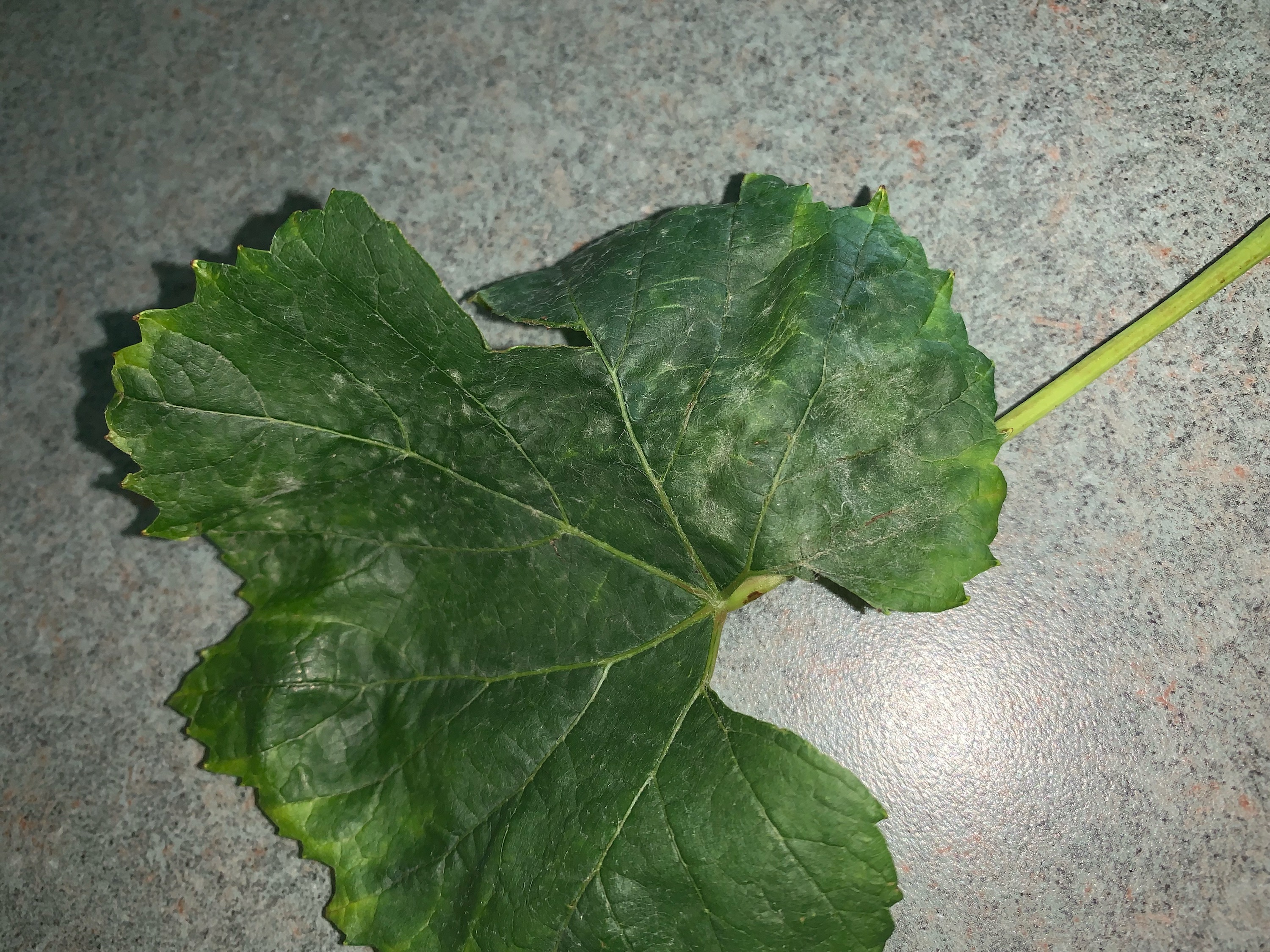
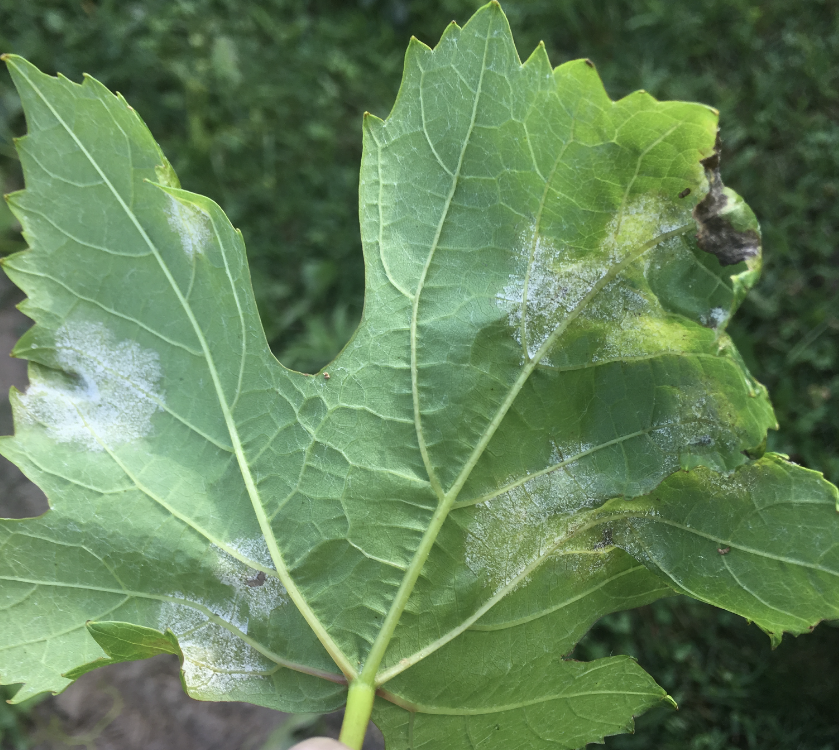
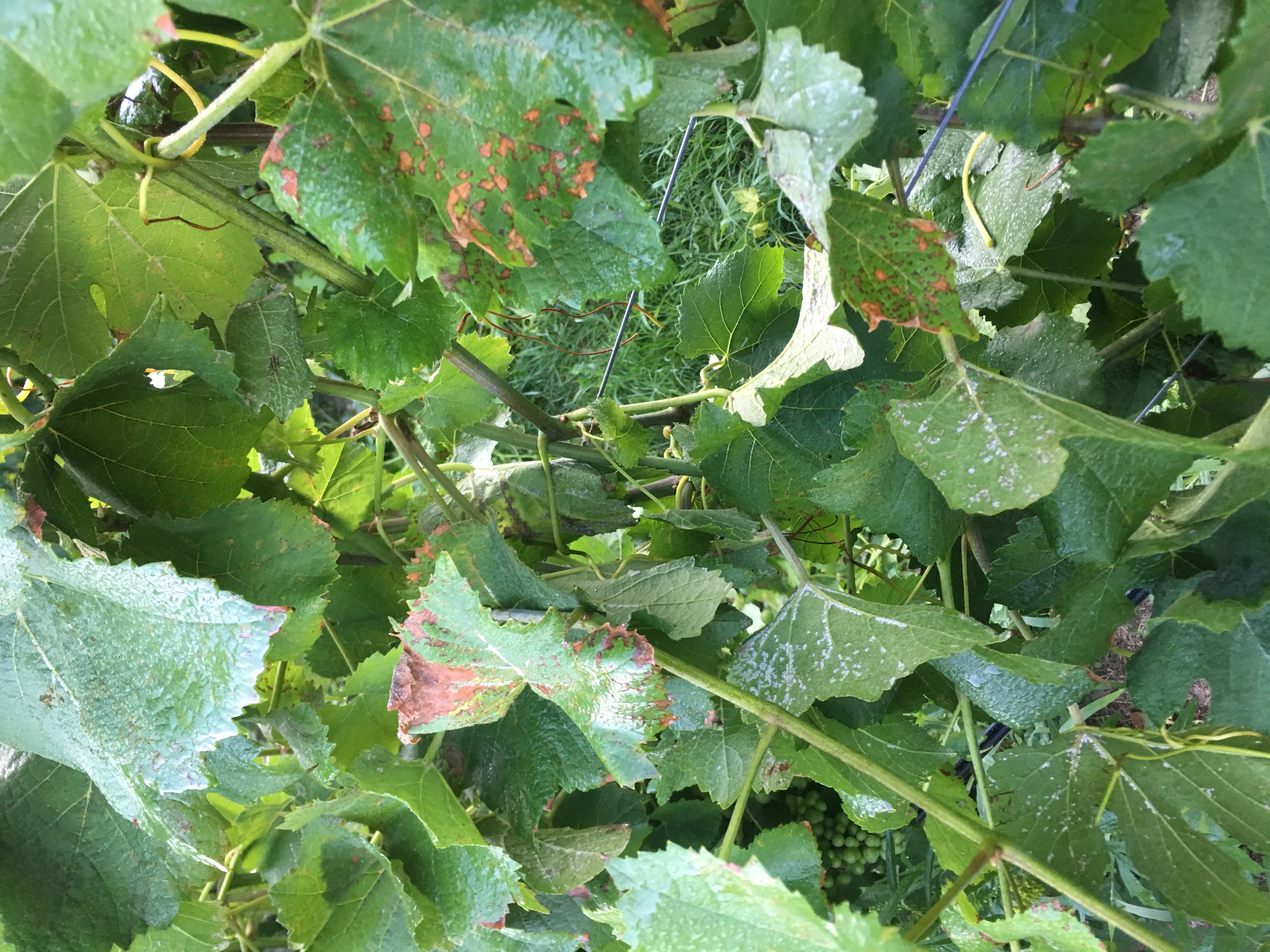
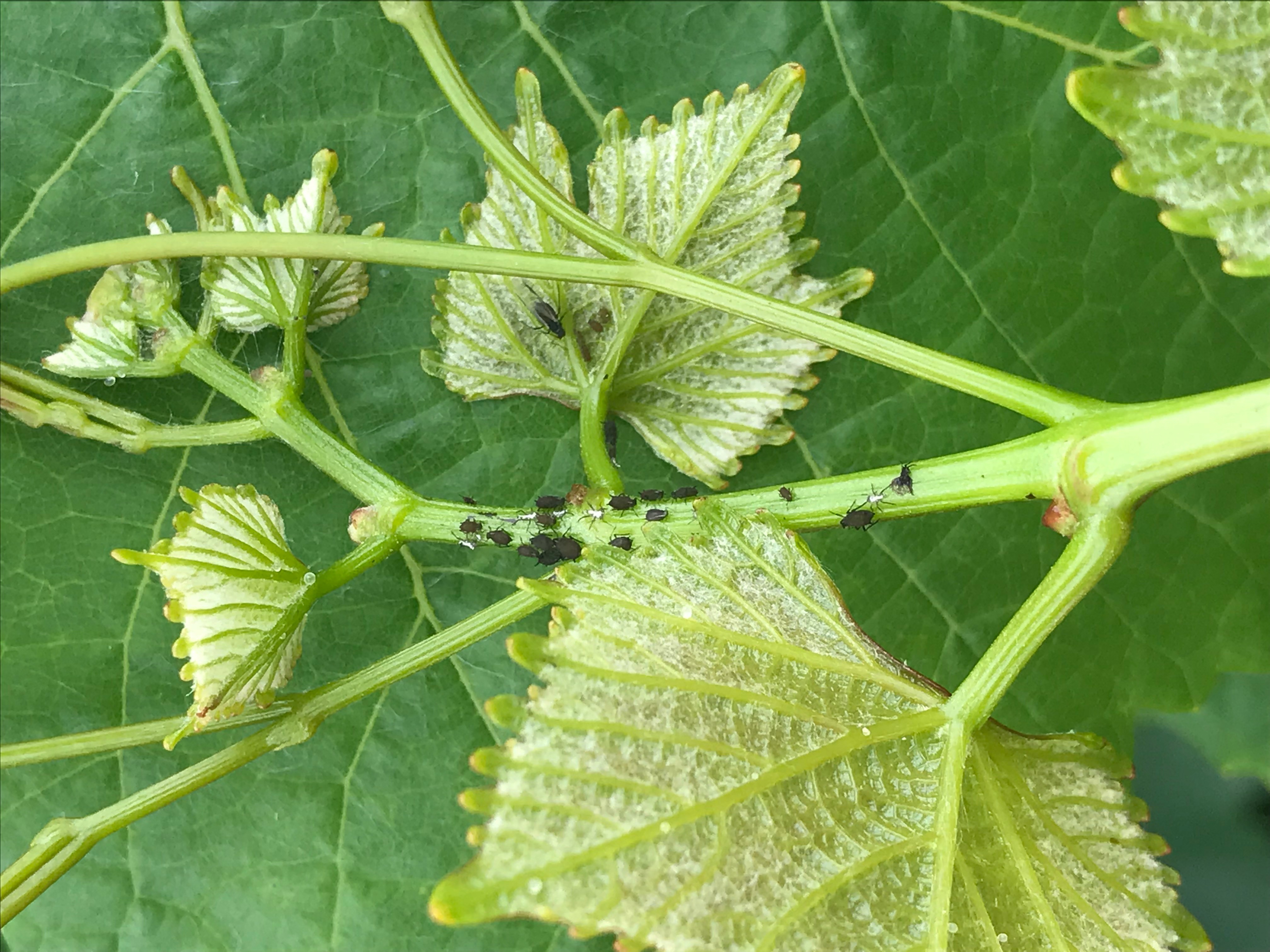
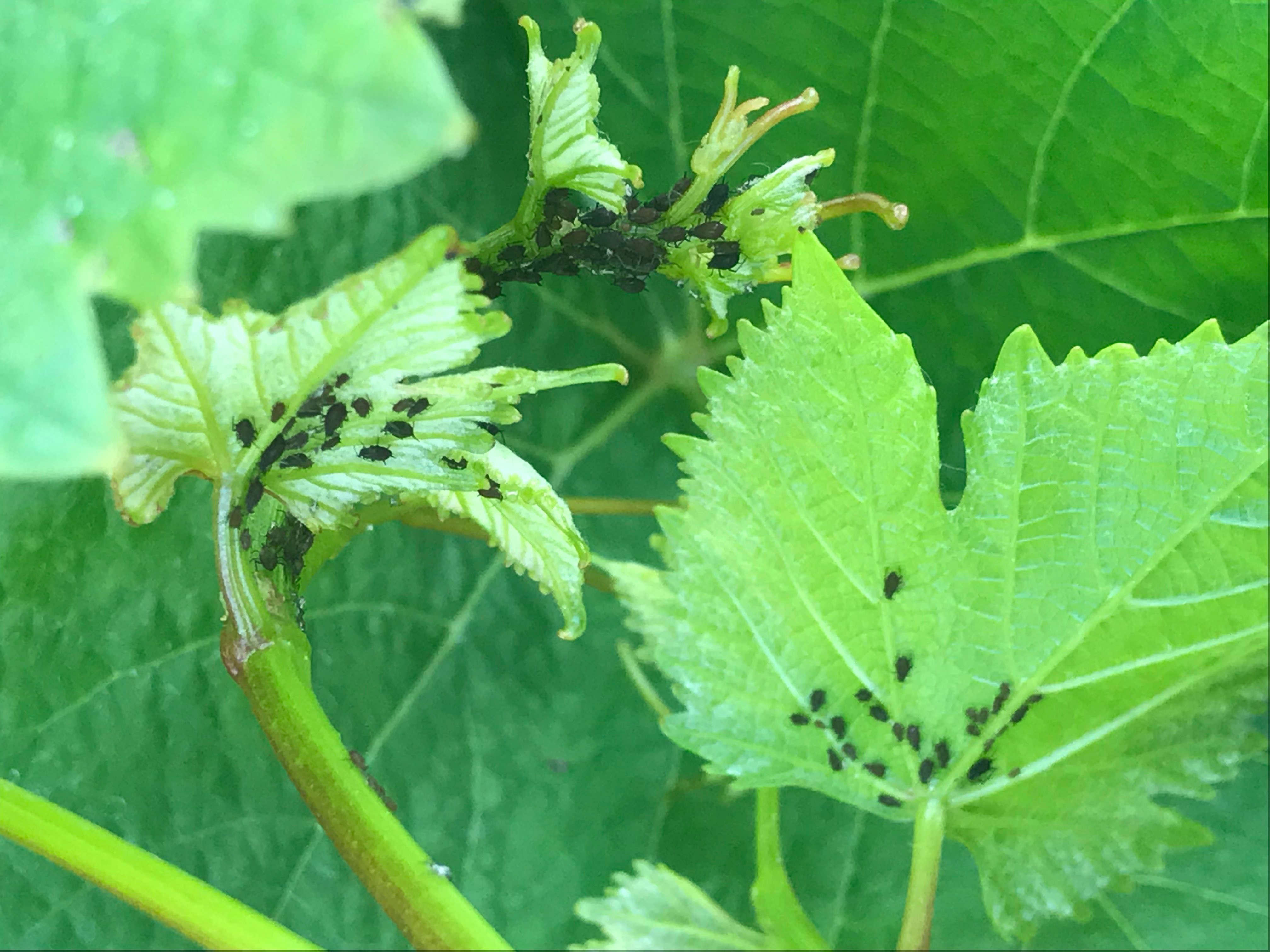
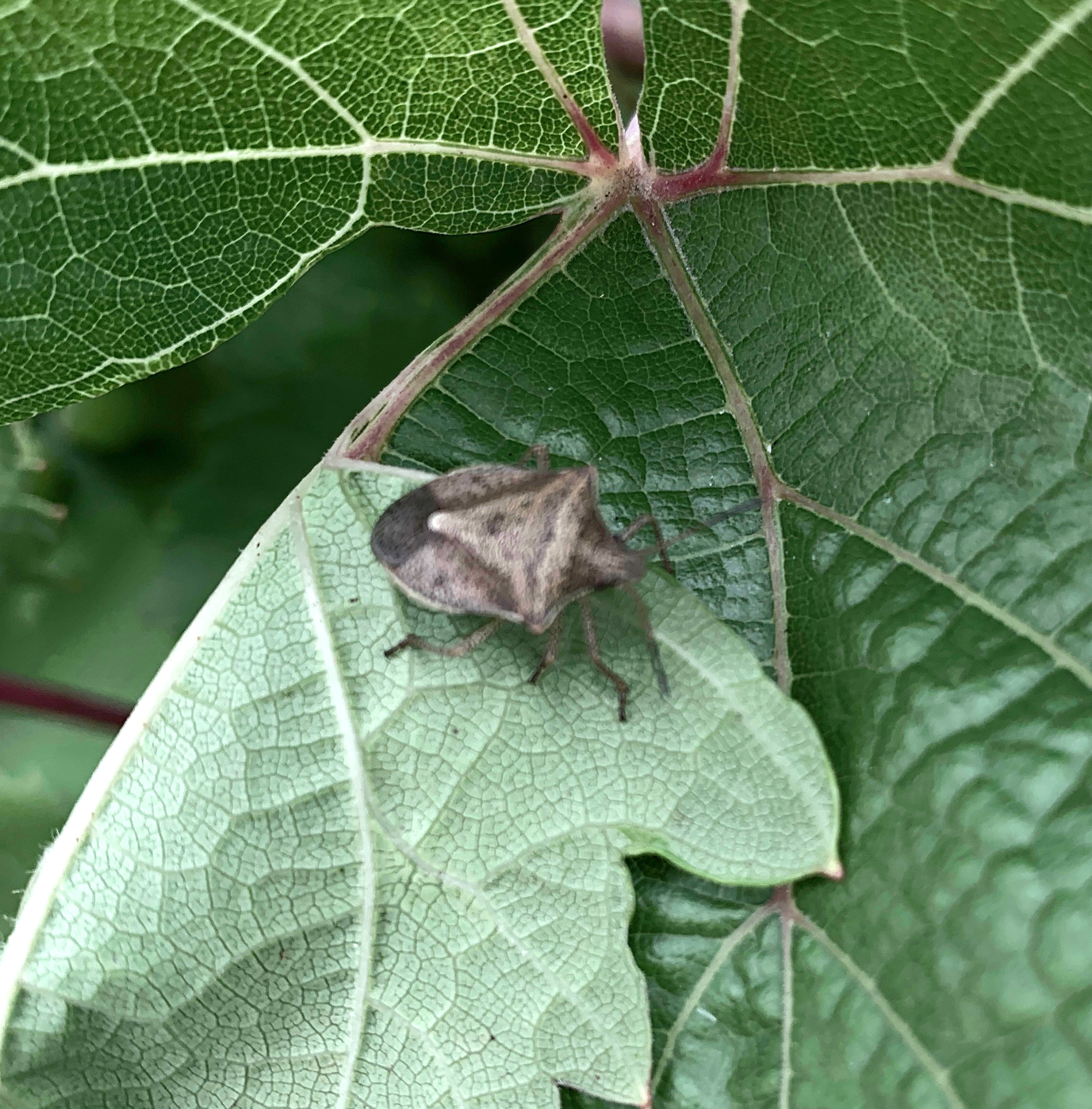



 Print
Print Email
Email




